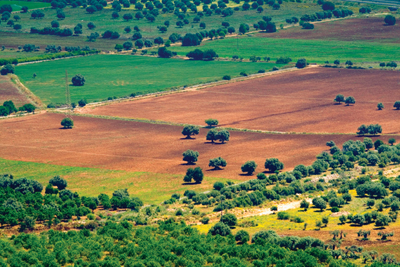
Understanding the Big Picture of Land Use
By Treena Hein
Features New Technology ProductionNew AAFC software that analyzes whole-farm GHG emissions to help producers make better decisions
Farmers across Canada are currently testing the initial version of
“Holos,” a whole-farm greenhouse gas emissions modelling software
program developed by a large team of Agriculture and Agri-food Canada
(AFFC) scientists.
Farmers across Canada are currently testing the initial version of “Holos,” a whole-farm greenhouse gas emissions modelling software program developed by a large team of Agriculture and Agri-food Canada (AFFC) scientists.
 |
|
| Holos software allows farmers to select scenarios and current farm management practices, then input such practices as zero tillage, rotations with perennial forages, shelterbelts and new feeding practices, to estimate how chosen options would impact emissions produced by the entire farm.
|
The program is designed to help producers determine how changing their farming practices or taking other actions, such as planting trees, can reduce greenhouse gas (GHG) emissions by providing a “whole-farm” emissions picture for individual farms.
“At the same time we are pleased to provide this research-based interactive framework,” says Dr. Henry Janzen, an AAFC soil scientist who helped develop the software. “We recognize that practices that may reduce GHG emissions on a given farm might also affect productivity, profitability and environmental factors such as water quality and soil quality. We acknowledge that GHG emissions are only one factor among many that farmers consider in deciding which practices to use.”
Holos allows farmers to select scenarios and farm management practices currently used and then input such practices as zero tillage, rotations with perennial forages, shelterbelts and new feeding practices. Holos then provides an estimate of how chosen options would impact on emissions produced by the entire farm – analyzing how much carbon dioxide, nitrous oxide and methane would be produced from livestock, manure management, cropping systems and energy use, and accounting for carbon storage and loss from planting trees and other actions.
“The whole-farm perspective provided by Holos is very important,” says Janzen. “For example, while a new feeding ration might reduce emissions from livestock, growing that new feed might also affect emissions elsewhere on the farm.”
Farm location also impacts how much various practices are able to reduce GHG emissions. “The effectiveness of a practice in reducing emissions depends, in part, on where you are,” says Janzen. “No-till, for example, is a practice for which the GHG emission reduction benefits vary across the country because of differences in soil type and climate.”
Farmers should therefore understand, he stresses, that rather than aiming to create a rigid list of farming practices that best reduce emissions, the Holos software is a tool designed to help producers explore the interaction of many factors within different scenarios.
In addition to helping farmers better appreciate the complexity of “whole farm” GHG emissions, Janzen says Holos will also point to areas where scientists need to learn more. “Understanding the ‘big picture’ of land use is critical,” he notes. “Farm land is one of our primary resources, and we need more information on how best to use it, given global pressures to produce more food, reduce GHG emissions, conserve energy and preserve environmental health for future generations.”
The Soil Conservation Council of Canada (SCCC) is leading the testing of Holos through “Taking Charge Teams” (TCT) across Canada. SCCC executive director Glen Shaw says, “in most cases, the Teams are soil conservation groups in the provinces, but a number of the groups in eastern Canada are Soil and Crop Improvement Associations.”
The testing project began in December 2008 and will finish on March 31, 2010. “By the end of September, Holos had been tested by 287 farmers,” says Shaw. “The target is to have between 800 and 900 farmers test the software, and we hope the majority of the testing will be completed by December or January.” During February and March 2010, SCCC will compile the feedback into a final report, which will then be used by the AAFC Holos development team to develop an improved version.
Some other farming systems, such as horticulture, are not already included because the research needed to estimate their emissions is still incomplete. The team hopes to update the software as more research becomes available.
“In British Columbia, poultry farmers have seen a need for more detail to be incorporated into Holos, as some of their management practices are not yet accounted for,” says Shaw. Eugene Legge, a broiler producer in Holyrood, N.L., and past SCCC board chair, agrees. “My understanding is that they’re going to add a lot more parameters for poultry producers in the next version,” he says. “The concept is a good idea because it allows farmers to say ‘what if,’ and gives them an opportunity to look at what they could do to remove GHG on the farm without doing anything at that point. It’s another tool in the toolbox.”
“We are well aware of limitations of the current version of Holos and look forward to incorporating feedback and providing enhancements for future versions,” says Janzen. The software will be available at no charge to farmers in Canada.
For more information visit Agriculture and Agri-Food Canada at www.agr.gc.ca/scienceandinnovation.ca or the Soil Conservation Council of Canada at www.soilcc.ca.
Print this page